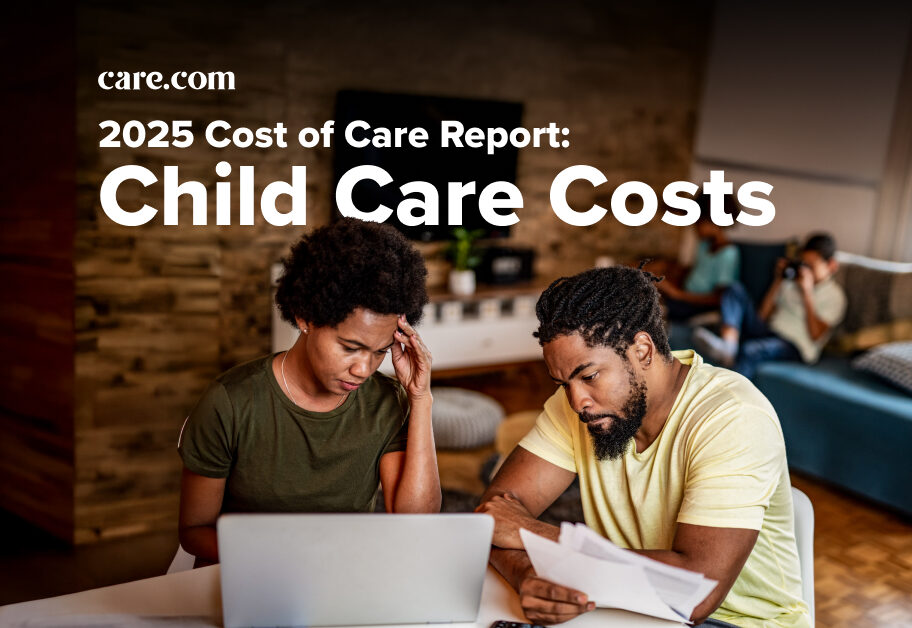When it comes to child care, the United States is currently spending at roughly half the rate of most industrialized nations. A sharp new piece from the New York Times provides compelling evidence in favor of flipping that equation.
Pulling from an array of reports and research papers—including stats from academia, government and Care.com—Times staffer Claire Cain Miller meticulously builds the case for what might be called the Care Economy: The argument for why it’s smart, and profitable, to invest in improving everyone’s access to quality, affordable care for young children.
That’s an important leap, because child care is super expensive—which means making it more affordable will be expensive, too. But Miller’s piece might be our best example of how to measure the return on investment of smart child care policy. In her words:
Recent studies show that of any policy aimed to help struggling families, aid for high-quality care has the biggest economic payoff for parents and their children – even their grandchildren. It has the biggest positive effect on women’s employment and pay. It’s especially helpful for low-income families, because it can propel generations of children forward toward increased earnings, better jobs, improved health, more education and decreased criminal activity as adults.
Mic drop? Not even. That’s just the first paragraph. Here are some key takeaways from the rest of Miller’s piece — which we highly suggest you read in its entirety.
Your Latest Reminder That the Cost of Care is Cray
Last year, Care.com researchers teamed up with New America to produce the Care Index, an interactive data set exploring the cost, quality and availability in the US. Their findings put the average cost of full-time care in child care centers to be at $9,589, and in-home care provided by a nanny costs an average of $28,353 per year. For Miller’s piece, we dug into our numbers to find the average cost of care in general—when taking into account the proportion of families using in-home and center-based care—is about $16,514.
As Miller points out that, that means the average family is paying considerably more than the Department of Health and Human Services guideline, which says child care should cost 7 percent of a family’s income. In fact, Miller notes, a staggering “42 percent of families who buy care for young children spend considerably more than that, according to census data analyzed by Beth Mattingly at the University of New Hampshire.”
Quality Care = Better Outcomes
We already know that an estimated 85 to 90 percent of all brain development occurs before age 5. Quality child care and early childhood education have been tied to positive long-term outcomes for children. But Miller’s piece shows how this plays out over a lifetime — and how the results pay for themselves many times over.
Take, for example, a new study led by Nobel laureate economist James J. Heckman, which analyzed two experimental programs in North Carolina. One group of children had access to free, full-time care, while a control group remained at home or in lower-quality programs. The study followed the children from birth to age 35, and found that by the time they reached adulthood, kids from the higher-quality care group were better educated, healthier and experienced more economic success.
The experimental program wasn’t cheap, Miller writes, but the ROI was remarkable. The researchers calculated that the investment in those children’s care returned $7.30 for every dollar spent.
Those findings dovetail with a second study, which followed nearly a million kids in Denmark into old age, and found those who attended high-quality programs had more schooling and increased likelihood of living past retirement age.
A Little Help Goes a Long Way for Working Parents
There’s a theory around the Care Economy that goes like this: For many parents, there is a co-dependency between care and work. Care is the lynchpin that allows parents—and especially mothers—to remain in the workforce. So investments in child care are also an effective driver of women’s economic empowerment.
To support this notion, Miller draws from a new study of family policies in 22 industrialized countries. Its conclusions?
More than parental leave or flexible schedules, it was government spending on early childhood care and education that had the single biggest effect on boosting women’s employment, earnings and fertility rate and on decreasing gender pay gaps.
One reason: It helps women work, while other policies help them take breaks from work, according to the authors, Claudia Olivetti of Boston College and Barbara Petrongolo of Queen Mary University of London. “Making it easier to be a working mother mattered most,” Ms. Olivetti said. “There is a higher premium for careers from staying in the market.”
That should be obvious. Here in the US, where we lack federal policies providing paid leave or affordable child care, progressive companies, like Facebook, EY and Patagonia have found a competitive advantage in recruiting and retaining talent by providing benefits like paid parental leave and child care assistance. Investments in family-friendly benefits—like the ones available through Care For Business—are returned through improved talent acquisition and retention, employee engagement, productivity and better financial performance than competitors.
Low Income, High Impact
Children from low-income families benefit most from access to quality child care. And it’s their parents, who are struggling to make ends meet, who benefit greatly from assistance that affords them access to that care. To illustrate this point, Miller shares the story of Jasmin Cross, a 35-year-old community college student from Portland, who has two young sons and a partner who earns about $35,000 a year.
Theirs is a family for whom Trump’s proposal would mean little, yet Head Start—a government-backed program that may well be on the chopping block—has been a godsend. “She found out about a Head Start school on the college’s campus, one of the few free early childhood programs for low-income families,” Miller wrote. “Both boys now attend full time, and Ms. Cross, who is studying accounting, plans to earn her bachelor’s in three years.”
In the debate of late around President Donald Trump’s proposal to make child care more affordable, a key criticism has been that his plans—advanced by his daughter, Ivanka—would do little for those families who need help the most.
Care.com’s own analysis of the proposal Ivanka Trump presented to Washington lawmakers earlier this year confirmed that the plan would provide the most benefit to married families who pay for child care weekly and earn over $225,000 per year, with the least benefit to single parents who earn less than $27,500 per year.
Our fragmented care infrastructure is a complicated, many-layered problem on which it’s easy to agree something needs to be done, but far harder to agree on a solution. With her piece, “How Child care Enriches Mothers, and Especially the Sons They Raise,” Claire Cain Miller has given us with a very smart overview of the ways an investment in child care could have myriad benefits. Her headline focuses on mothers and sons, but it’s clear a smart investment would be a boon to us all.
No doubt there will be more to come on the child care policy front. Until then, you can catch up on our existing coverage.
- How Much Does Child Care Cost?
- Here’s What Your Family Would Save with the Trump Tax Deduction
- What Every Family Needs to Know About Ivanka Trump’s Child Care Plan
- Care Index Illustrates the Need for Child Care Infrastructure Investment
- The FAMILY Act is a Proposal to Un-Complicate Care for Millions of Americans





